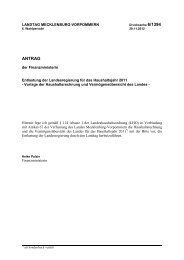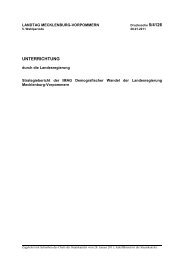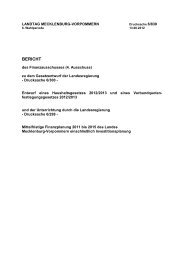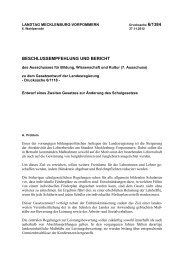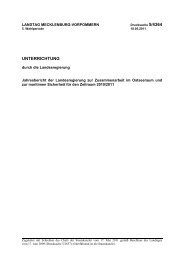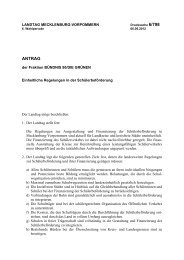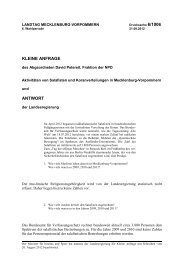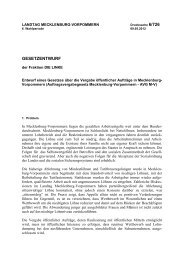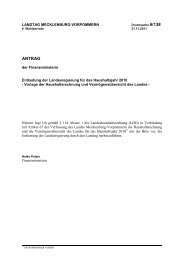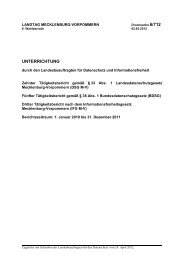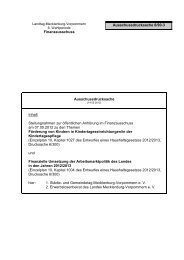Baltic Rim Economies - Baltic Port List
Baltic Rim Economies - Baltic Port List
Baltic Rim Economies - Baltic Port List
You also want an ePaper? Increase the reach of your titles
YUMPU automatically turns print PDFs into web optimized ePapers that Google loves.
Expert article 916 <strong>Baltic</strong> <strong>Rim</strong> <strong>Economies</strong>, 21.12.2011 Quarterly Review 5�2011<br />
changes of the transport situation and the related effects<br />
dependent on the potential growth rte of international<br />
economy, the ability of the EU to support major<br />
infrastructure projects in the future and the ability and<br />
motivation of the region under observation to operate<br />
proactively and to coordinate activities. The initial analysis<br />
of the scenarios shows that in case of continued normal<br />
growth of the international economy and<br />
retained/strengthened strategic capability of the EU it is<br />
possible to foresee continued integration of the EU’s<br />
Eastern edge countries as well as significant increase of<br />
transport volumes and the continued important role of the<br />
transport and logistics sector as an economic growth<br />
engine. The conclusion is based primarily on the following<br />
positions:<br />
� Rail <strong>Baltic</strong> becomes not merely a rail link between the<br />
three <strong>Baltic</strong> states and Central Europe, but will probably<br />
handle a rather large cargo flow related to Finland;<br />
� The two important components of this cargo flow are,<br />
first, Finland’s increasing trade with Latvia, Lithuania<br />
and central Europe (possibly also with the Southeastern<br />
direction) and, secondly, the East Asian cargo flow from<br />
the Arctic Ocean, which will at least partly move<br />
southward across Finland;<br />
� While at present it is maritime transport, which primarily<br />
suffers from the stricter norms concerning sulphur<br />
pollution, it can be presumed in the longer run that<br />
ecological criteria applied to all modes of transport will<br />
continue the already existing policy of driving the<br />
transport from the roads to railways and to the sea. This<br />
will mean the continued competitiveness of logistics<br />
schemes based on the combination of maritime and rail<br />
traffic.<br />
� The mobility of the people will increase with the rising of<br />
the living standards, the mobility pattern will become<br />
more diverse;<br />
� The Helsinki-Tallinn integration will increase; the<br />
emergence of the twin city will significantly boost the<br />
need for transport. It is possible that in the further future<br />
this will lead to the construction of a Helsinki-Tallinn<br />
tunnel;<br />
� The North-South and East-West transport corridors<br />
would not compete in the longer perspective, but will<br />
mutually strengthen each other. Fast rail link to the core<br />
of Europe will crease premises for logistics and<br />
distribution centres, which can handle the movement of<br />
cargos not only in the North-South, but also in the East-<br />
West direction. There will be better opportunities for<br />
providing warehousing and value adding services to<br />
enterprises in Northwestern Russia in handling their<br />
products moving to Europe.<br />
� Estonia, Latvia and Lithuania will gradually turn into an<br />
increasingly integrated economic space, where<br />
international firms, largely based on the Nordic capital,<br />
can specialise and cooperate. This will be related,<br />
among other factors, to the increasing cargo volumes;<br />
� In case of increasing cost of aviation fuel the Rail <strong>Baltic</strong><br />
can successfully compete with air traffic in longer<br />
distances;<br />
81<br />
� Although a large share of the present intra-industrial<br />
trade between Finland and the <strong>Baltic</strong> states would<br />
disappear with the reduction of the wage gap and other<br />
price gaps of production input, it would be replaced by a<br />
new type of intra-industrial trade, based largely on<br />
balanced cooperation, both concerning manufactured<br />
goods and services. The “less distant” Central Europe,<br />
thanks to good rail connections, will increase the market<br />
of the firms operating in the <strong>Baltic</strong> states (and Finland),<br />
their competitiveness in the value chain of goods and<br />
services for the European market will improve. This will<br />
accelerate the modernisation of the structure of goods<br />
being produced in the <strong>Baltic</strong> states.<br />
Well functioning transport connections both for<br />
passenger and cargo transport are a vital premise for trade<br />
and the development of closer forms of integration. The<br />
transport projects of the Eastern <strong>Baltic</strong> countries like the<br />
Rail <strong>Baltic</strong>a, Via <strong>Baltic</strong>a, the construction of large port<br />
terminals, incl. for handling transcontinental cargos, etc, will<br />
presume good international cooperation and the EU<br />
support, but their realisation is a significant factor in<br />
bridging the development gap between the new EU<br />
member countries and the Nordic countries so as to<br />
contribute to the development of the entire <strong>Baltic</strong> Sea<br />
region.<br />
Erik Terk<br />
Professor, Director<br />
Tallinn University<br />
Estonian Institute for Futures Studies<br />
Jüri Sakkeus<br />
H-T Transplan Research Coordinator<br />
Tallinn University<br />
Estonian Institute for Futures Studies<br />
Estonia<br />
� Pan-European Institute � To receive a free copy please register at www.tse.fi/pei �



